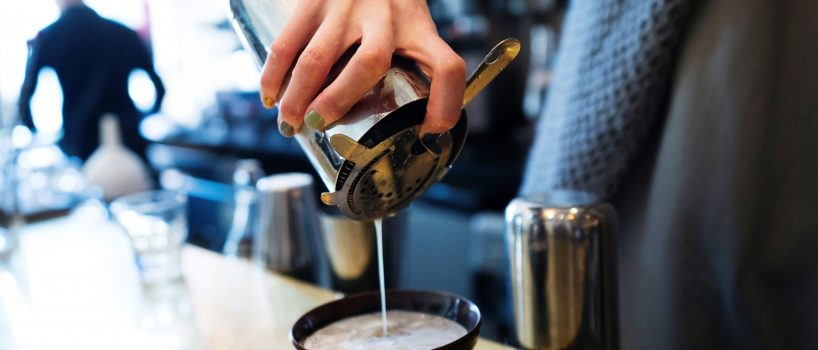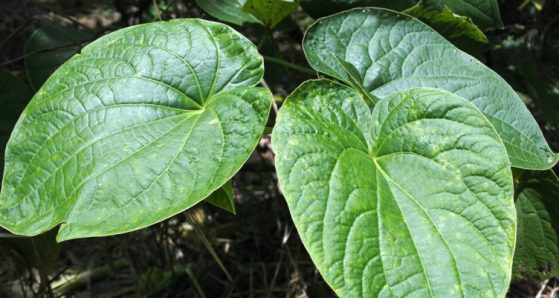
Kava: Why Nature’s Xanax Is Making a Comeback
For years, chamomile tea has been a light sleeper’s staple. It’s warm and floral in taste, with a mild soothing effect that can calm you and help you drift off a little faster than usual.
Then there’s kava.
What is kava?
Kava is like chamomile on steroids. This muddy-tasting little root comes from the Pacific Islands, where people have used it for centuries as everything from a pain reliever to a ceremonial drink. A potent anxiety reliever, kava offers a non-alcoholic way to wind down at the end of the day, especially if you’re working late or you have trouble falling asleep.
The secret lies in kavalactones, the psychoactive parts of the kava plant. The kavalactones in a cup of kava tea, or a few drops of kava extract, can put you into a rare state of relaxed focus. Download this handy chart on kava to get started.

Benefits of kava
Kava can be a powerful calming and relaxing tool in your biohacking arsenal. Here are some of its benefits:
RELATED>> STRAWBERRY KAVA
Eases anxiety

Anxious? Kava can help you relax without dulling your mental edge. A Cochrane Review of kava looked at 11 double-blind, placebo-controlled studies with a total of 645 participants. It found that kava significantly relieves anxiety, with mild to no side effects[1].
Several studies have found that kava extract is comparable to antidepressants and benzodiazepines (Xanax and Valium, for example) for improving social and general anxiety disorders[2][3]. Participants who took it daily for up to 24 weeks showed none of the side effects or addiction you can get from pharmaceuticals.
Keeps you relaxed but alert

Perhaps the best part of kava is that it doesn’t impact mental clarity. A cup of kava tea will make you feel pleasantly relaxed, similar to the way a glass of wine might, but you’ll be perfectly sharp mentally. Even heavy and long-term kava users show no decrease in cognitive function[4].
Improves sleep

Kava can help you sleep, too. Animal studies have found that it influences GABA[5]and serotonin[6], two key neurotransmitters for helping you wind down. Kava decreases stress and relaxes your muscles, making it easier to fall asleep. It also produces a mild, pleasant euphoria – but again, not enough euphoria to make it addictive.
Try taking kava an hour before bed. Kava tea is a good option for sleep, as tea is relaxing in and of itself. This brand is in most grocery stores and tastes better than straight kava root, although it’s not very strong. You can steep two or three teabags at once for a more potent dose.
Soothes sore muscles and reduces pain

You may feel kava numb your mouth when you drink it. That’s thanks to dihydrokavain and dihydromethysticin, two natural pain relievers in the kava plant[7]. These compounds relieve pain and muscle spasms when you drink them, and they also make for a great muscle rub.
You can buy kava paste, mix it with a carrier oil that’s good for your skin (XCT Oil is a good option), and rub it on sore muscles, an aching back, or anywhere else you may feel muscle pain.
A satisfying alcohol substitute

The combination of social relaxation and mental clarity makes kava an excellent alternative to drinking. In fact, kava bars are a social staple on many Pacific islands, and they’ve been popping up in the U.S. too.
Kava loosens you up socially without the negative effects of drinking. It’s a good way to keep up with the party and wake up feeling good the next morning. Be wary of combining kava and alcohol – the two enhance each other in rodents[8].
Risks of using kava

In 2001, researchers reported that, in rare cases and in long-time heavy users, kava can cause liver toxicity[9]. The FDA and CDC cited case studies and warned people with liver disease about taking kava, and several European countries made kava a controlled substance[10].
However, several studies in the last 5 years have challenged the idea that kava is toxic to your liver.
- One review found that the people who got liver toxicity were taking other drugs and medications that are rough on the liver[11].
- The New Zealand government concluded that kava is safe both short- and long-term[12].
- The German government reversed its ban on kava after researchers concluded that the liver toxicity was the result of a kava allergy that affects roughly one in 100 million people[13].
Certain varieties can also cause nausea and lethargy — more on that below.
How to use kava

Another issue with kava is taste. It’s like eating grainy mud.
Pre-made kava teas do a good job of disguising the taste but they’re often not particularly strong. Most research uses kava extract. It’s easy to take, but it may not have the full range of kavalactones that you’d get from kava paste or whole root.
Kava root and kava paste have horrible taste and consistency, but plenty of kavalactones. You can chew/swallow them, add them to a smoothie, or mix them in hot water and strain them to make tea. The trouble with them is that, like many tropical crops, including coffee, they’re at risk for mycotoxin contamination.
How much kava to take and when?
You can take kava in tea, powder, capsule, or tincture form. Experts recommend a dose of 70-250mg of kavalactones a day. Read the product label to find out kavalactone content.
For better sleep, take kava an hour before bed. For anxiety relief, divide up your dose throughout the day.
What to expect
Your lips might feel a bit numb — that’s normal. It takes about 20 minutes to kick in, and you’ll feel the relaxing effects for at least three hours after taking it. You won’t get high — kava is a muscle relaxant, so it simply loosens up the body while keeping you alert.
How to make kava tea

Whipping up the mixture in a blender is the quickest and easiest method to make kava tea. Follow these simple steps —
Ingredients:
- 2-4 tablespoons kava root powder
- 8 ounces of hot water
Directions:
- Add your kava root powder and water to a blender. Make sure you use hot (around 120 degrees) and not boiling water — water that’s too hot can cause the kava to thicken, making it difficult to strain. Blend on high for about 4 minutes.
- Strain the mixture through a fine mesh strainer or cheesecloth, wringing out the liquid into a glass. Throw away the pulp and sip away.
- Since kava can taste unpleasant, you can chase it down with something sweet, like a small piece of high-quality dark chocolate or a handful of organic blueberries. Or make it Bulletproof and add grass-fed butter and Brain Octane Oil. The good fats will speed absorption of the psychoactive kavalactones.



